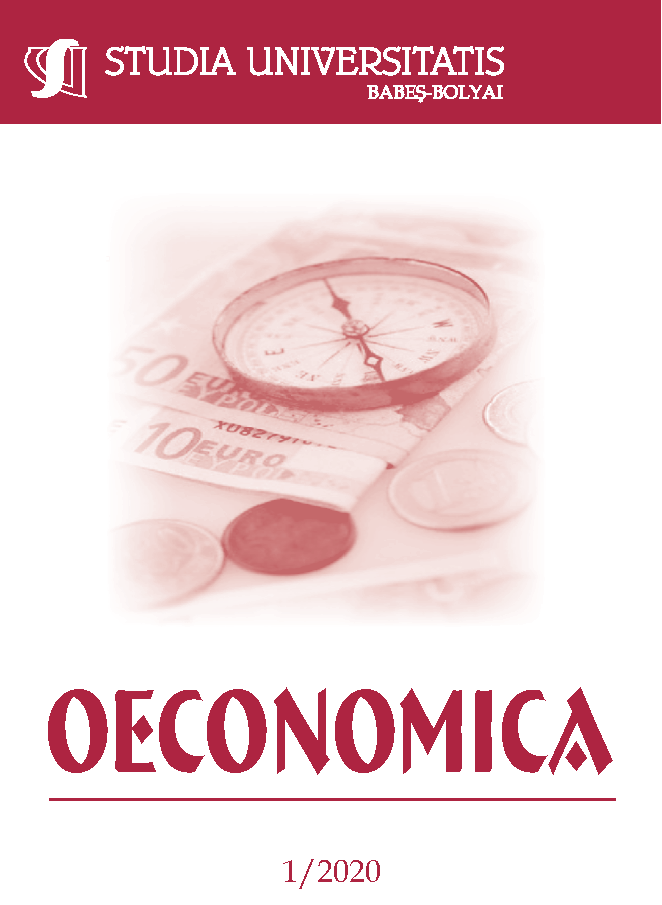ANALYSIS OF THE FACTORS IMPACTING THE ONLINE SHOPPING DECISION-MAKING PROCESS
DOI:
https://doi.org/10.2478/subboec-2020-0004Keywords:
Purchase decision, Online shopping behavior, Consumer decision-making process, E-commerceAbstract
Selecting online the most suitable product or service can be a draining process, and the broad diversity of products on retailers' websites is overwhelming. Following this, there has been a high interest in examining buyers’ motivations and recognizing the determinant factors that affect the decision-making process in the case of online shopping. Hence, in this article, we carried out an empirical study and we analyzed to what extent certain factors such as product features, confidence in the online shop, product reviews, product price, consumer evaluations, the trust of the sources, usability of the online shop, convictions and commitment to the brand, product notoriety, consumer loyalty programs, WOM, and eWOM influence the purchasing decision. The findings reveal that the most significant variables determining the acquisition decision are product features, confidence in the online shop, reviews of the product, product price, and evaluations of customers from trusted sources. The most relevant information resources are trustworthy websites that offer specialized product reviews and reliable websites that offer customer product reviews.
JEL classification: L81, M31
References
Aghekyan-Simonian, M. et al. (2012) ‘The role of product brand image and online store image on perceived risks and online purchase intentions for apparel’, Journal of Retailing and Consumer Services. Pergamon, 19(3), pp. 325–331. doi: 10.1016/j.jretconser.2012.03.006.
Beneke, J. et al. (2013) ‘The influence of perceived product quality, relative price and risk on customer value and willingness to buy: A study of private label merchandise’, Journal of Product and Brand Management. Emerald Group Publishing Limited, 22(3), pp. 218–228. doi: 10.1108/JPBM-02-2013-0262.
Blanca, H. (2011) ‘Age, gender and income: do they really moderate online shopping behaviour?’, Online Information Review. Edited by J. Julio. Emerald Group Publishing Limited, 35(1), pp. 113–133. doi: 10.1108/14684521111113614.
Chen, J. et al. (2016) ‘The effect of online information sources on purchase intentions between consumers with high and low susceptibility to informational influence’, Journal of Business Research. Elsevier Inc., 69(2), pp. 467–475. doi: 10.1016/j.jbusres.2015.05.003.
Floyd, K. et al. (2014) ‘How online product reviews affect retail sales: A meta-analysis’, Journal of Retailing. Elsevier Ltd, 90(2), pp. 217–232. doi: 10.1016/j.jretai.2014.04.004.
Goodrich, K. and de Mooij, M. (2014) ‘How “social” are social media? A cross-cultural comparison of online and offline purchase decision influences’, Journal of Marketing Communications, 20(1–2), pp. 103–116. doi: 10.1080/13527266.2013.797773.
Katawetawaraks, C. and Wang, C. L. (2011) ‘Online Shopper Behavior: Influences of Online Shopping Decision’, Asian Journal of Business Research. Asia Business Research Group, 1(2). doi: 10.14707/ajbr.110012.
Kim, H. W., Xu, Y. and Gupta, S. (2012) ‘Which is more important in Internet shopping, perceived price or trust?’, Electronic Commerce Research and Applications. Elsevier, 11(3), pp. 241–252. doi: 10.1016/j.elerap.2011.06.003.
Kostyra, D. S. et al. (2016) ‘Decomposing the effects of online customer reviews on brand, price, and product attributes’, International Journal of Research in Marketing. Elsevier, 33(1), pp. 11–26. doi: 10.1016/j.ijresmar.2014.12.004.
Kumaravel, R. (2017) ‘Consumer Shopping Behaviour And The Role Of Women In Shopping-A Literature Review’, Research journal of social science and management, 7, p. 50.
Lo, S.-K. (2014) ‘Why Expect Lower Prices Online? Empirical Examination In Online And Store-Based Retailers’, International Journal of Electronic Commerce Studies, 5, pp. 27–38. doi: 10.7903/ijecs.1191.
López, M. and Sicilia, M. (2014) ‘eWOM as Source of Influence: The Impact of Participation in eWOM and Perceived Source Trustworthiness on Decision Making’, Journal of Interactive Advertising. Informa UK Limited, 14(2), pp. 86–97. doi: 10.1080/15252019.2014.944288.
Meyers-Levy, J. and Sternthal, B. (1991) ‘Gender Differences in the Use of Message Cues and Judgments’, Journal of Marketing Research, 28. doi: 10.2307/3172728.
Moore, S. and Mathews, S. (2008) ‘An Exploration of Online Shopping Cart Abandonment Syndrome–A Matter of Risk and Reputation’, Journal of Website Promotion, 2. doi: 10.1080/15533610802104141.
Nadeem, W. et al. (2015) ‘Engaging consumers online through websites and social media: A gender study of Italian Generation Y clothing consumers’, International Journal of Information Management. Elsevier Ltd, 35(4), pp. 432–442. doi: 10.1016/j.ijinfomgt.2015.04.008.
Purnawirawan, N. et al. (2015) ‘A Meta-analytic Investigation of the Role of Valence in Online Reviews’, Journal of Interactive Marketing. Elsevier Inc., 31, pp. 17–27. doi: 10.1016/j.intmar.2015.05.001.
Sramova, Blandina, Pavelka, J. (2019) ‘Gender differences and wellbeing values in adolescent online shopping’, International Journal Of Retail & Distribution Management, 47(6), pp. 623–642. doi: 10.1108/IJRDM-08-2017-0173.
Statista (2020) Device usage for online shopping in the Nordic countries in 2015, by device and gender. Available at: https://www.statista.com/statistics/551476/nordics-devices-used-for-online-shopping-by-device-and-gender/.
Velaudham, C. and Baskar, P. (2015) ‘Influence Of Gender In Consumer Buying Behavior Towards Air Conditioner In Chennai City’, pp. 3–9.
Wang, Y. and Yu, C. (2017) ‘Social interaction-based consumer decision-making model in social commerce: The role of word of mouth and observational learning’, International Journal of Information Management. Elsevier Ltd, 37(3), pp. 179–189. doi: 10.1016/j.ijinfomgt.2015.11.005.
Downloads
Published
How to Cite
Issue
Section
License
Copyright (c) 2020 Studia Universitatis Babeș-Bolyai Oeconomica

This work is licensed under a Creative Commons Attribution-NonCommercial-NoDerivatives 4.0 International License.






